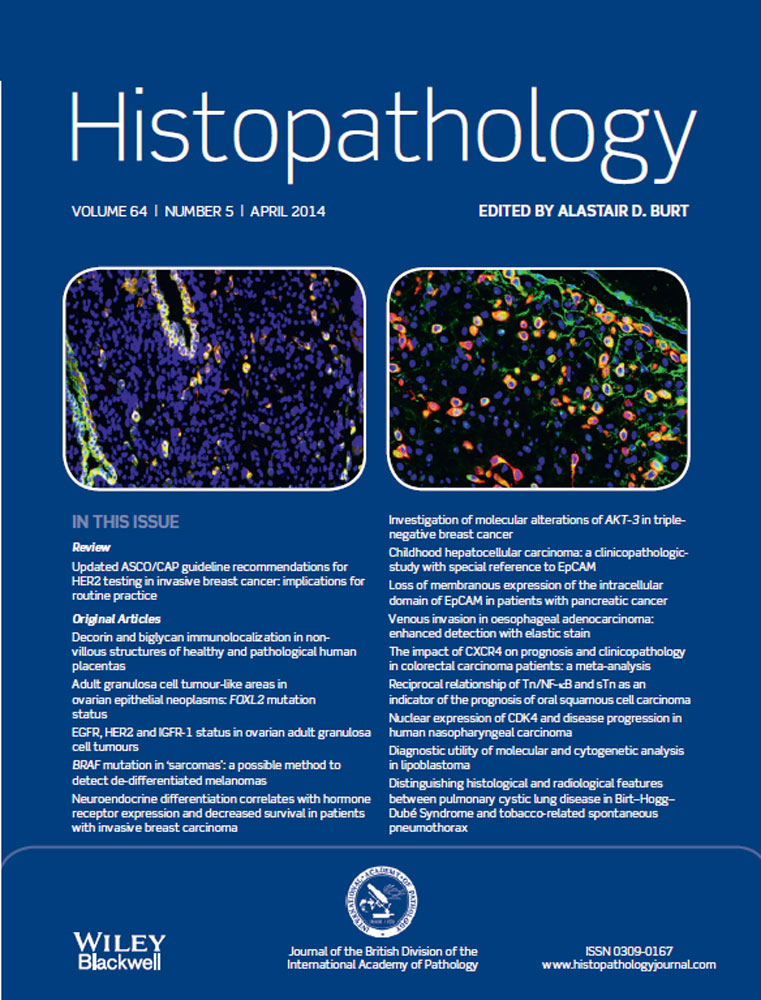Childhood hepatocellular carcinoma: a clinicopathological study of 12 cases with special reference to EpCAM
Abstract
Aims
To elucidate the characteristics of hepatocellular carcinoma (HCC) in children.
Methods and results
A retrospective search of our database identified 12 children with HCC (aged 10 months to 11 years; male/female ratio of 5:7). Their pathological features were compared with those of adult HCCs (n = 20), fibrolamellar HCCs (n = 14), and hepatoblastomas (n = 15). All childhood HCCs developed on a background of cirrhosis resulting from tyrosinaemia type 1 (n = 4), bile salt export transporter deficiency (n = 4), biliary atresia (n = 3), and long-standing total parenteral nutrition (n = 1). HCCs in cases of tyrosinaemia type 1 always had clear cell changes, solid architecture, and only mild nuclear atypia, whereas the morphological features of HCCs in the other conditions were basically similar to those of adult HCCs. On immunostaining, all cases of childhood HCC were positive for epithelial cell adhesion molecule (EpCAM); expression was diffuse (>50% of cancer cells) in 11 cases, and particularly strong in six children, all aged <3 years. In contrast, EpCAM was only focally expressed in three cases of adult HCC (15%). EpCAM was also expressed in most fibrolamellar HCCs and hepatoblastomas, but these two neoplasms differed from childhood HCCs in the expression of CK7, β-catenin, and p53.
Conclusions
The diffuse expression of EpCAM characterizes childhood HCC, and may indicate immaturity of neoplastic cells.




